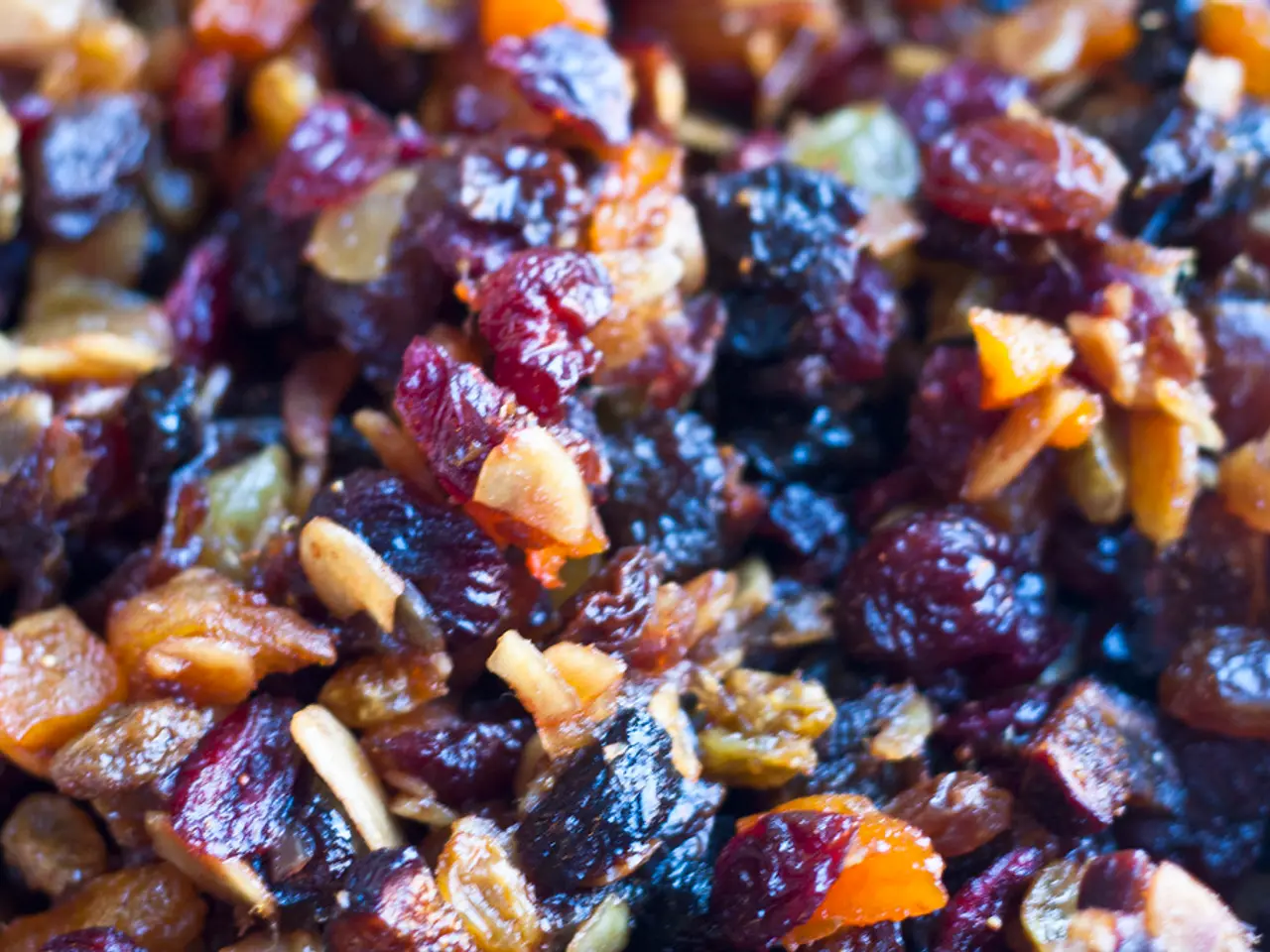Rising demand for protein products, yet consumer understanding remains uncertain
In the realm of dietary trends, protein has emerged as a popular choice among Americans, with 71% of the population striving to consume more [1]. However, a significant portion of the population remains unaware or uncertain about the recommended daily intake, with 79% falling into this category [2].
This knowledge gap between protein goals and actual consumption has been highlighted by Monica Amburn, senior director of food and nutrition at the International Food Information Council (IFIC) [3]. To bridge this gap, restaurants are adopting strategies to make healthier and more convenient protein choices more accessible.
One such strategy is offering protein-rich dishes across all dayparts. This includes options like grilled chicken, fish, plant-based proteins, eggs, or snacks such as beef jerky and edamame-based items [1][4]. For instance, Snooze A.M. Café has introduced Protein Pancakes, providing 32 grams of protein per serving, and Almond Butter Coconut Porridge for plant-based protein seekers [4].
Educating guests is another key strategy. On-site signage or staff prompts can highlight high-protein and healthier options, making it easier for customers to identify and choose these items [1]. Quick-service mega-chain Panda Express, for example, has launched five Balanced Protein Plates, each with protein amounts listed [5].
Customizable menu options also support healthier protein choices. Allowing customers to ask for modifications such as no added salt, dressings on the side, or swapping high-sodium/processed ingredients for fresh vegetables and whole grains, encourages a balanced meal [3].
Featured protein sources like grilled chicken, fish, tofu, lentils, or eggs, paired with colourful vegetables and whole grains, offer convenience and nutritional benefits while appealing to diverse dietary preferences [2][3][5]. Snooze A.M. Café's Protein Pancakes and Almond Butter Coconut Porridge, for example, are part of this trend.
Popular high-protein snacks and meals like Greek yogurt parfaits, cottage cheese bowls, hard-boiled eggs, or protein smoothies, provide both convenient and craveable protein options [2][4]. These options, which can contain 40+ grams of protein, cater to the 55% of people who prefer eating protein at dinnertime, as well as the 44% who choose breakfast and the 42% who opt for lunch [6].
Designing menu items with balanced macronutrients and lower processed ingredients also supports customers managing health conditions such as blood sugar levels. Grilled or baked preparation methods and avoiding sugary or high-carb toppings are key to this approach [5].
These strategies make healthier protein choices more visible, accessible, and convenient, helping restaurants meet customer demand while promoting better nutrition. High protein diets are associated with trends in weight management, fitness, and healthy aging [7]. The current Recommended Dietary Allowance (RDA) for adults weighing 150-200 pounds is 54-73 grams per day [8].
Many Americans would benefit from tools to understand their protein needs, why they need it, and how to optimize their intake [3]. The 2025 IFIC Food & Health Survey reveals that protein is the most sought-after nutrient, the most followed eating pattern, and the top characteristic consumers use to define a 'healthy' food [9].
Active individuals, those managing health conditions, or those taking popular GLP-1 weight loss medications like Wegovy and Ozempic may need more protein [10]. Registered dietitian nutritionist Carolyn O'Neill stated that most consumers consider protein healthy because it builds muscle, strength, and overall well-being and fitness [11].
In conclusion, as the demand for protein continues to rise, restaurants are stepping up to meet the challenge by offering a variety of protein-rich options, educating customers, and promoting healthier choices. This protein-rich revolution is not just a trend, but a shift towards a more health-conscious and protein-focused dietary culture.
References:
[1] IFIC Food & Health Survey 2021 [2] Nutrition.gov [3] Monica Amburn, IFIC senior director, food & nutrition [4] Snooze A.M. Café press release [5] Panda Express press release [6] IFIC Food & Health Survey 2021 [7] Harvard School of Public Health [8] Harvard School of Public Health [9] IFIC Food & Health Survey 2025 [10] Mayo Clinic [11] Carolyn O'Neill, registered dietitian nutritionist
- In the health-and-wellness sphere, science reveals that high-protein diets are linked to weight management, fitness, and healthy aging [7].
- To cater to the growing interest in protein, restaurants are adopting strategies like offering menu innovation, featuring protein-rich dishes, and educating guests about healthier protein choices [1].
- Science-backed nutrition's importance extends beyond fitness-and-exercise, as many Americans would benefit from understanding their protein needs, thanks to its role in building muscle, strength, and overall well-being [11].




